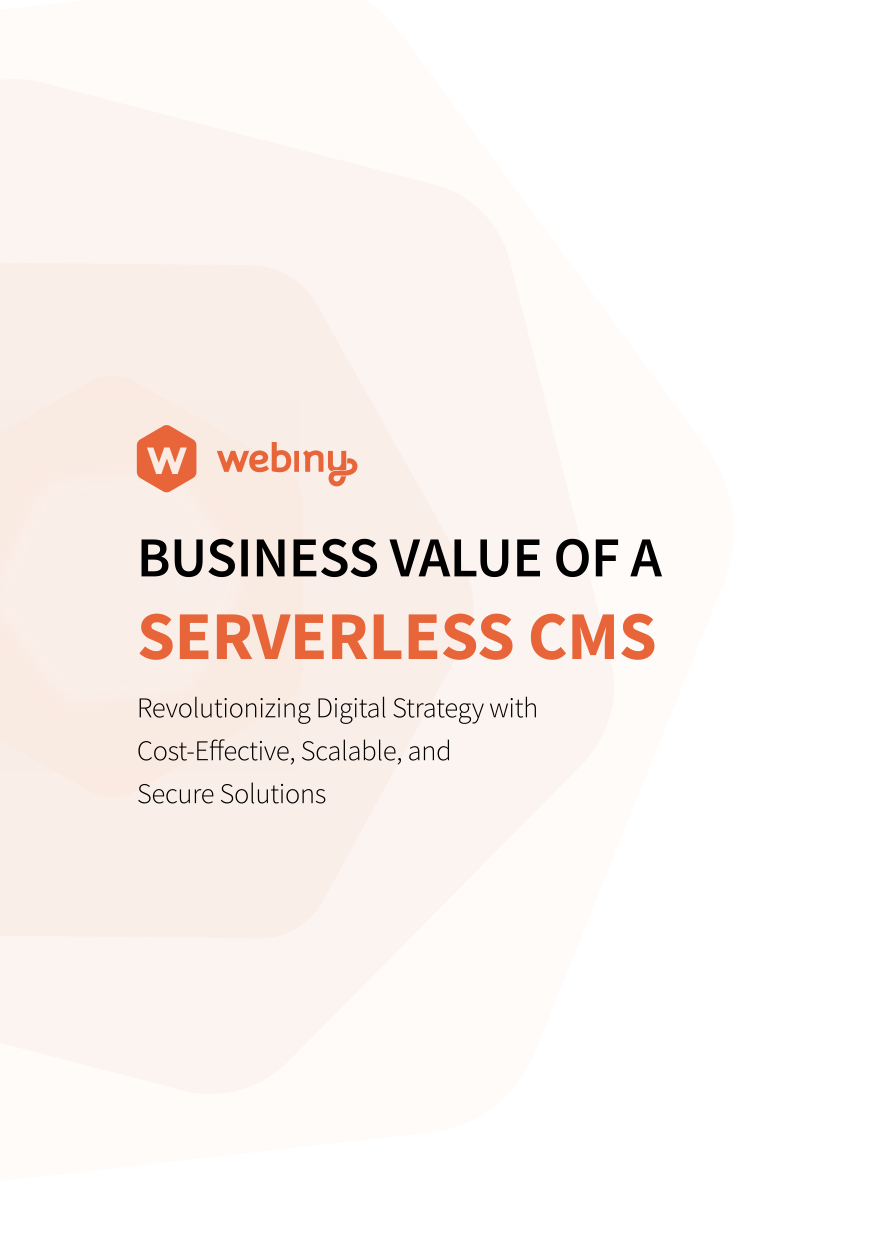BOOK A CALL
If your legacy CMS is slowing
you down, you need Webiny
We have talked to over 200 companies about how they are using their CMS solutions and what
their key pain points are. And the majority are struggling with the same four key issues.

Modern businesses need
modern tech solutions
We have created Webiny CMS to provide solutions to these problems
and support the web products of the future.
Self-hosted
Webiny runs inside your own AWS cloud. Your data, under your own rules.

Open Source
Released under an MIT license and architected for extensibility.

Serverless
Unlimited, responsive and adaptable scale that’s cost effective and fully managed.

Unified
Single experience that brings content creators and developers together.
.svg)
Accessible
Enterprise-grade capabilities accessible to everyone.

Advanced Features
Integrations with enterprise systems, data compliance mechanisms, security, best-in-class tooling for Site Reliability Engineering, SLA based support, consultancy services.
Webiny unlocks significant
business benefits

Here is how Webiny stands out from other competitive CMS solutions
Product fundamentals
Contentful
Strapi
Storyblok
Sanity
Webflow
Pricing Plans
Technical Limits
(Read more)
(Read more)
Content managment
Website building
Customization abilities
1 GB bandwidth
This information was gathered from publicly available information on the websites of these providers. Last update Mar 2022.
Ready to get started?
For business teams
Discuss your business/project needs and CMS requirements
Get the answers to your specific business questions
See Webiny in action and learn how it can power your business
For developers
Install Webiny in just 4 minutes.
Learn how to create a new Webiny project and deploy it into your AWS account.
